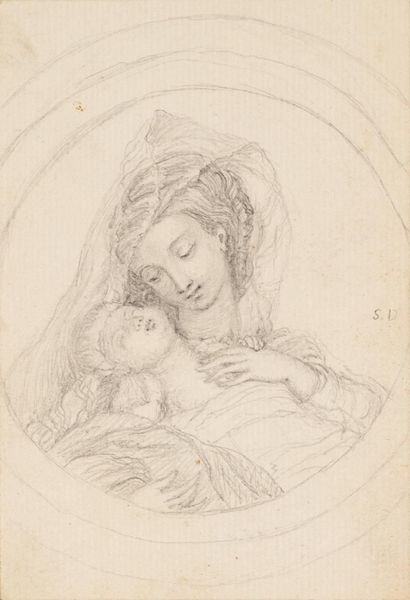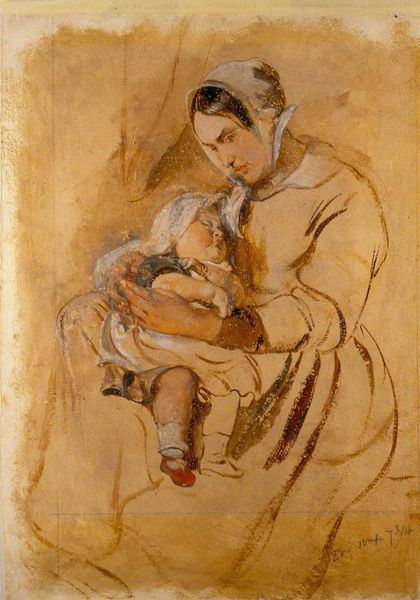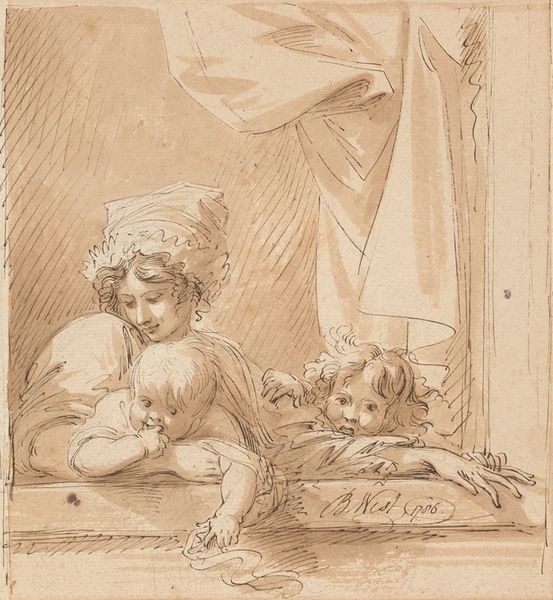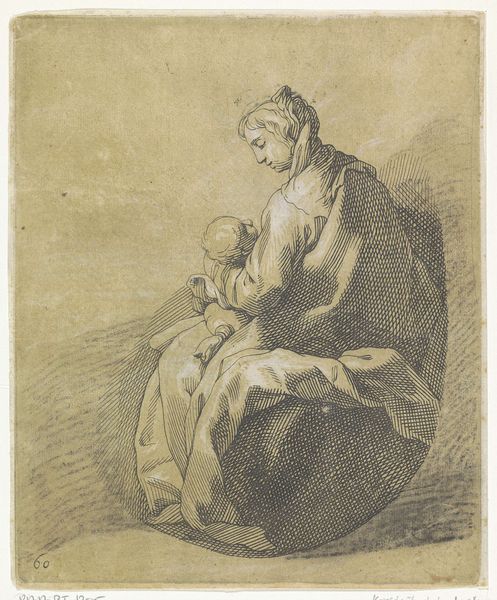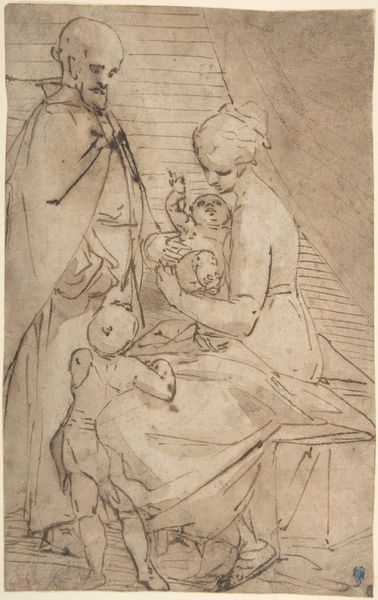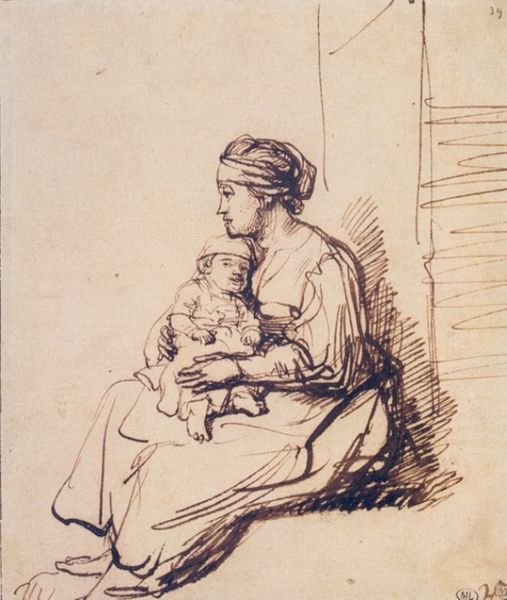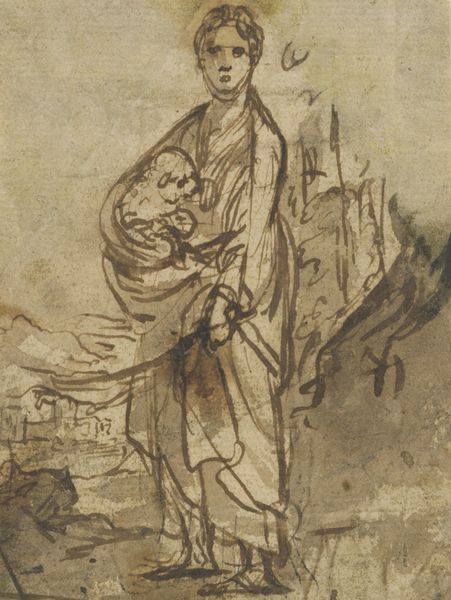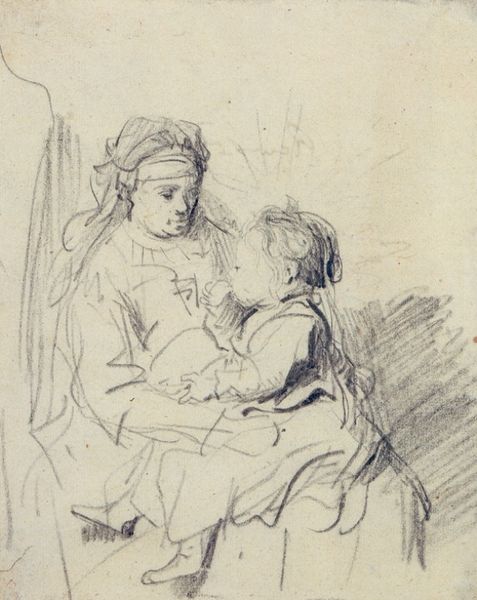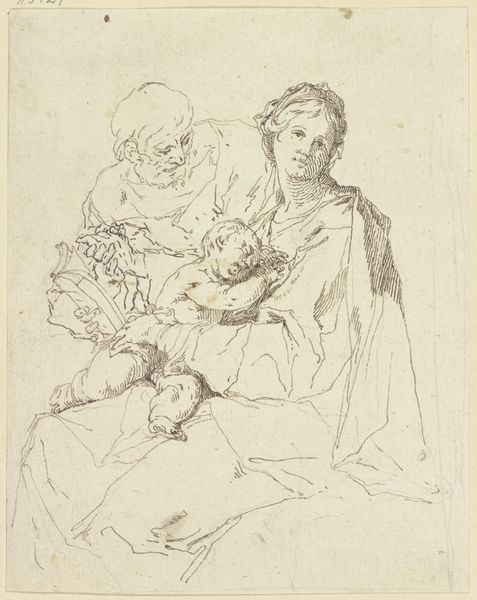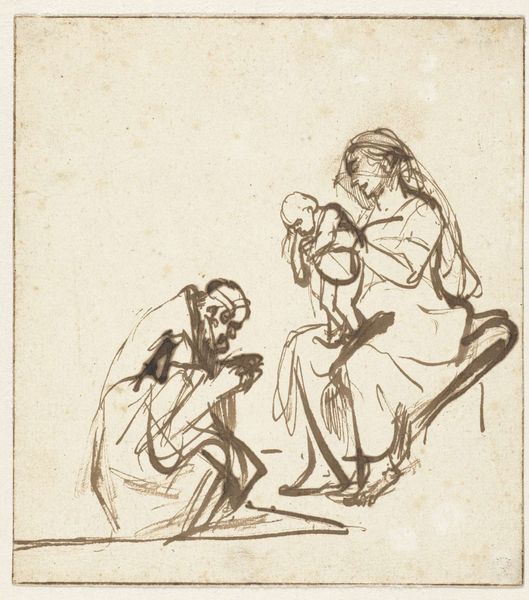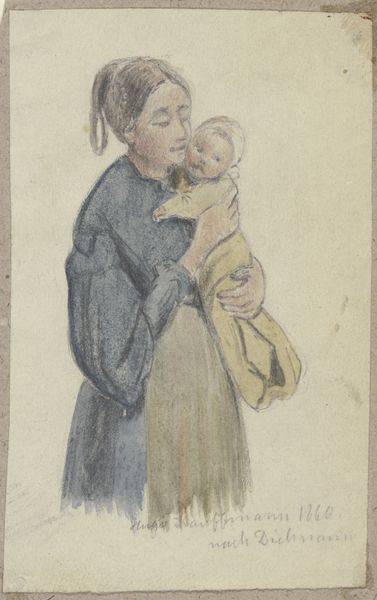
drawing, painting, paper, watercolor
#
portrait
#
drawing
#
figurative
#
painting
#
figuration
#
paper
#
watercolor
#
romanticism
#
portrait drawing
#
watercolor
Copyright: Public Domain: Artvee
Editor: This is James Ward's "Mother and Infant," circa 1798, done in watercolor. It's quite a tender image; the figures seem almost to blend together with these delicate washes of color. What compositional elements stand out to you in this work? Curator: The chromatic range of this watercolor adheres to a tertiary harmony—earthy browns and soft whites articulated through modulated washes. Note how the artist does not fully define the pictorial space but uses this tonal range to bring definition to the subject and reinforce its solemn monumentality. Consider, for instance, the near-symmetry in the positioning of the figures' heads and the way this arrangement anchors the composition. Do you notice the negative space around their forms? Editor: Yes, it's very striking. The negative space makes them feel isolated, even though they are physically connected. Is this a common characteristic of the portraits during this period? Curator: It is more compelling to look at the ways in which formal qualities interact to produce specific effects within the image, irrespective of convention. The limited palette focuses our attention on the lines and shapes, creating a powerful image of maternity that does not rely on narrative or embellishment, though the artist here gestures towards the Romantic sensibility through its loose brushstrokes and attention to sentiment. Is that your read as well? Editor: Yes, absolutely! I appreciate how you focused on the visual language. Looking at it again, I’m really struck by the economy of line. The emotional resonance, you might say, exists not necessarily in the expressions, but is communicated instead through Ward's calculated placement of form and use of color. Curator: Precisely. Reflecting on the ways in which the visual structure of the work communicates pathos moves us beyond anecdotal observation into the realm of analysis.
Comments
No comments
Be the first to comment and join the conversation on the ultimate creative platform.
